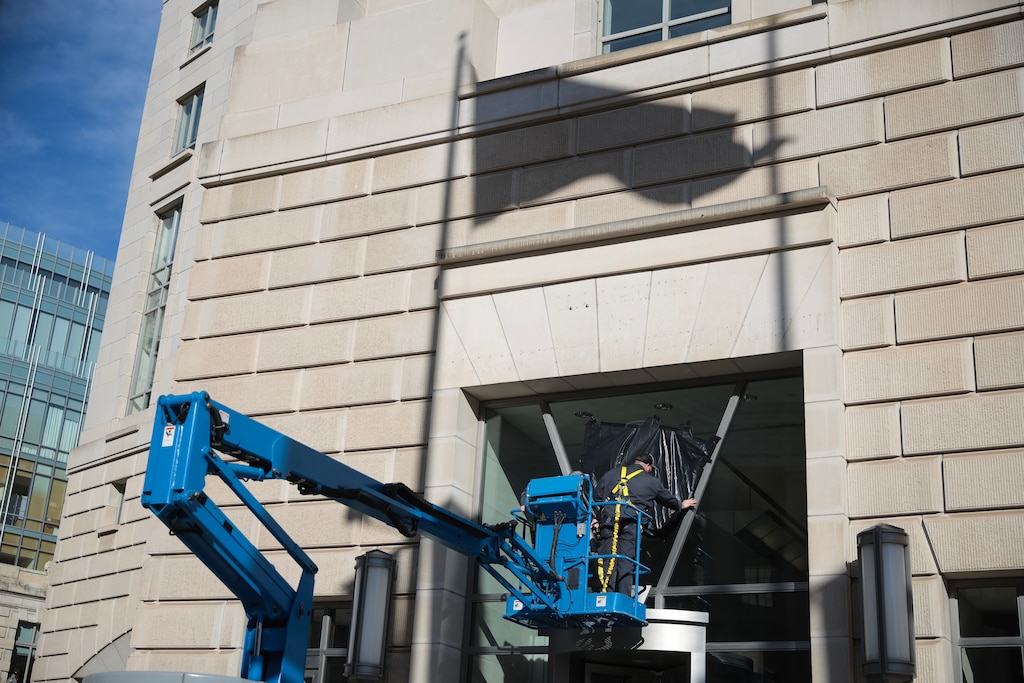A new report gets into granular detail about federal money and Maryland, and it’s not pretty.
The Trump Administration’s push to downsize the federal workforce has put a spotlight on Maryland’s economy, given its longstanding and deep reliance on federal spending.
The comptroller’s office published the report Wednesday in collaboration with the University of Maryland Robert H. Smith School of Business. Another report is expected to be published later this summer and will look forward to the future with Maryland’s 2026 fiscal year budget in mind.
“I am optimistic that our state, buoyed by our educational institutions, local and state leaders, and other important industries, has the wherewithal, determination, and talent to weather the forecasted economic storm brought on by the Trump Administration and emerge in a stronger position for the long term,” Comptroller Brooke Lierman wrote.
The Baltimore Banner thanks its sponsors. Become one.
In terms of population, Maryland ranks among the middle of U.S. states, the report said, but it has the third-most federal jobs as well as the fifth-most federal defense spending.
According to the report, about 229,000 Marylanders work for the federal government, and that doesn’t count active duty military personnel. In addition to direct employment, federal agencies spend about $46 billion annually on contracts with companies in Maryland, which accounts for a tenth of the state’s total economic output.
But that still doesn’t quite capture the full scope of the federal government’s “symbiotic relationship” with Maryland, the report said. That’s because there are higher education programs, private businesses and nonprofits that all tangentially benefit from the federal government and its spending.
That means any cuts can have ripple effects, and, according to the report, the initial cuts have already gone quite deep.
The last time the federal government got squeezed was about a decade ago. The Obama Administration and a Republican-controlled Congress, concerned with the ballooning national debt, passed legislation that cut spending. Known as sequestration, the effects played out in 2013 and 2014, and Maryland lost about 8,000 federal jobs, according to the report.
The Baltimore Banner thanks its sponsors. Become one.
In recent years, the number of federal jobs in Maryland had been growing. Since 2019, Uncle Sam added about 15,000 jobs here. But in just two months under President Trump — March and April — Maryland has already lost an estimated 5,300 federal jobs.
The U.S. Agency for International Development, or USAID, had grown exponentially during that time frame, almost tripling its spending on contractors. The Trump Administration eliminated the agency earlier this year.

The bulk of federal jobs in Maryland are with the Department of Defense and the Department of Health and Human Services, which has several agencies headquartered in the state, like the Food and Drug Administration, the National Institutes of Health, and the Center for Medicare & Medicaid Services.
Federal workers also have some of the biggest paychecks in Maryland, the report said. Their average annual salary — $126,500 — dwarves their counterparts in Maryland’s private sector, who make on average $73,000 a year.
About 31% of federal jobs in Maryland pay an annual salary of at least $150,000, the report found.
The Baltimore Banner thanks its sponsors. Become one.
In addition to digging through the numbers, researchers also held roundtables with ex-federal employees to get a better understanding of the data. The former employees talked about their fears, including competing with other ex-federal workers for a limited number of jobs and trying to find work that matches their expertise.
Most said they plan to remain in Maryland, despite “bracing for a long and challenging job search” that would likely end with jobs that pay them far less than before.
“Workers expressed degrees of sadness because they were passionate about their work and the service they provided to the public,” the report said. “Most said they would return to their old job if reinstated, though some were hesitant to trust the Trump Administration and their job security, given recent events.”




Comments
Welcome to The Banner's subscriber-only commenting community. Please review our community guidelines.